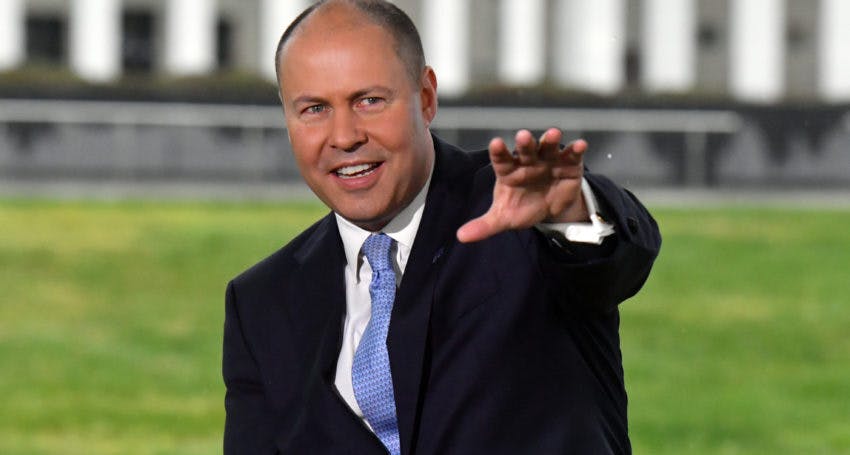A budget for the bosses

The federal budget delivered exactly what you would expect from a Liberal government. In the words of the Australian Financial Review, it’s a “tsunami of money for the corporate sector”—billions upon billions of dollars to business owners and high-income earners and extraordinarily little for workers.
The biggest tax cuts go to the richest people, those earning $100,000 per year or more—less than 8 percent of the population at the time of the Census—receiving most of the benefits. And with debt ballooning, the government is sticking to its so-called third stage of cuts, to be undertaken in a couple of years’ time, which will smash the progressive nature of the system by abolishing the second highest tax bracket—a massive gift to richest people in the country. The Australia Institute’s senior economist, Matt Grudnoff, previously estimated that the current and future tax cuts combined will give 80 percent of the savings to the top 20 percent of taxpayers, while the bottom half will get just 3 percent.
The treasurer says that he is borrowing money to protect jobs and livelihoods. While it might look that way in the short run, in the long run it is garbage. The borrowing ultimately will pay for the tax cuts for the top end of town, which, being permanent, will accrue, amounting to hundreds of billions of dollars in lost government revenue over several decades. The future “budget repair”, when it comes time to start paying down the debt, will be shouldered by the working class through reduced services and entitlements as the gap between rich and poor grows wider. (Those earning more than $200,000 per year will be more than $11,000 per year better off.)
It was socially derelict that key sections of the economy were not nationalised and run to ensure that everyone’s needs were met during the pandemic. You could hardly expect Liberals to countenance such a thing (unless it involves coal). But they will spend billions partially covering private sector wages and outlay tens of billions subsidising capital investment through instant asset write-offs. Plus, there’s more money for the for-profit aged care industry, the aviation bosses, the coal bosses, agricultural bosses and more. The Liberals talk a lot about being good managers of business. But capitalists would laugh out of the boardroom anyone proposing to hand money to a series of companies without receiving so much as a bond or a share and dividend in return. Not these economic masters. They just give public money away to the private sector as charity.
“This is an extremely business-friendly budget that will be well received by the share market because of the huge cash-flow injection for listed companies”, notes the Financial Review’s back page today. “The amount of cash flowing from Treasury to business is staggering.” Sure enough, Australian Securities Exchange benchmark indices are up sharply this morning. Big business likes what is sees. Small business owners too are getting a suite of tax concessions.
While it’s a permanent party for those at the top, most of whom have already recovered income lost in the pandemic, almost every pillar of support for workers and the poor is temporary or non-existent. JobSeeker is being reduced to the scandalous below-poverty-level rate as unemployment continues to rise. JobKeeper is being wound back. There’s no increase in the age pension, disability pension or student allowances. More than one million people on temporary visas, left almost entirely to fend for themselves in the lockdowns, still get no assistance. People coming out of high school can look forward to a higher education system that is more expensive and more privatised with fewer courses and fewer staff.
And one of the measures posing as assistance for workers—the JobMaker hiring credit for businesses—is anything but “help”. “The largest job-creation measure in the ‘Jobs Jobs Jobs’ Budget ... resembles a mass youth work-for-the-dole scheme”, noted Alison Pennington, the senior economist at the Centre for Future Work, in a Facebook post. “Without sufficient labour protections or requirements on employers to retain workers, the hiring credit will lead to batches of up to 450,000 young vulnerable people being churned through low-skilled, low-paid work every twelve months.”
The government says that this budget is about recovering from the pandemic. But the people worst affected by the crisis are almost totally left out. It not only provides waves of cash for businesses, it locks in the broader trajectory of Australian capitalism for decades to come: greater inequality, greater corporate power and the undermining of any vestige of egalitarianism in its institutions.